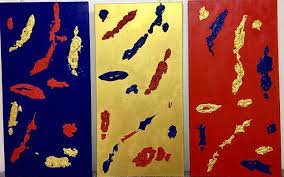Art begins with what exists and with imagination sends us messages of new possibilities, healing the divide between what is and what could be. View the study sheet here. Watch the recording here.

In 1863 Jules Verne embarked on a writing project that would extend over forty-two years. Les Voyages Extraordinaire (Extraordinary Voyages) is a series of novels through which Verne guided readers to unknown dimensions of known locations. An avid student of geography, Verne sought to explore the universe with a combination of science, wonder and adventure.
To his publisher Verne wrote: “It is my intention to complete, before my working days are done, a series which shall conclude in story form my whole survey of the world’s surface and the heavens.” Verne’s exposition of the world and heavens totaled fifty-four novels. The same number as there are Torah portions.
Verne considered his works to be “geographical novels,” and objected strongly to their characterization as science fiction such as the novels written by H. G. Wells. “I will always and as much as possible,” he wrote, “remain within the realms of geography and science, since this is the purpose of the whole work; but whether it is the instinct for theater that pushes me there or whether it is to captivate our readers, I tend to totally complicate what remains to be done in the novels by employing all the means provided by my imagination.”
Verne used his imagination to narrate extra-ordinary voyages as a way to gain deeper insight into the reality and complexity of the world in which we live. Rather than a departure into fantasy, Verne’s use of imagination is in the service of understanding and shaping reality.
Joseph Zrihen is an Israeli French artist and a medical doctor. He is, as he describes himself, “one man, two passions; doctor of the body and painter of the soul.” Pictured here is his triptych Les Voyage Extraordinaire. Three panels. The colors red, blue and yellow occupy the fields. Each holds domain in one of the panels. Each has presence as biomorphic organisms in another’s. Why the explicit identification with Verne’s comprehensive survey of heaven and earth? Why visually present it as a triptych?
A triptych consists of three separate elements that compliment each other and that can be folded into one. In the story of creation Day Three is when the waters below the sky are gathered into one area, allowing dry land to appear. As a result the earth sprouts vegetation. Zrihen takes us on an extraordinary voyage of his own. Separation occurs and life teems in profusion as a result. Yet, all of those separations and differentiations fold into a oneness. This “doctor of the body and painter of the soul” teaches us about the complementarity of those two dimensions.
Verne’s and Zrihen’s works caused me to reconsider how I have read the story of Jacob’s ladder in the past. Jacob’s response to his dreamed encounter with God was to ask for material assistance on his journey. Only then would he consider embracing God as his God. How crassly transactional, I thought. Verne and Zrihen remind me: material reality is not the obstacle to the spiritual. It is both the origination for a spiritual life and the beneficiary of it. The angels go up the ladder and then go down the ladder.
In Parshat Tetzaveh Moses is instructed to make garments for the priests that will convey kavod (glory) and tiferet (beauty). The word kavod elsewhere in Torah refers to the Glory of God. Only twice in Torah is kavod used as applying to human beings. Both are in this portion. The word tiferet only appears three times in Torah, twice in this portion and once in Deuteronomy. All three describe how human beings are enrobed or endowed. The domain uniquely associated with the divine, kavod, is here borne by humans. And tiferet, the aesthetic, the creative work of humans, is needed in order to translate the divine essence into a garment of the material world.
Rav Kook, an early twentieth century kabbalist and a chief rabbi in pre-state Israel, wrote: “Literature, painting and sculpting serve to realize the potential of all the spirituality imprinted in the depths of the soul.” Imagination, with its power to redescribe what exists, is borne of human experiences, stories and encounters, which are stored, curated and reconfigured. Ever present, it awaits a commission in a world in desperate need of glory and beauty.
Join us here at 7:00 p.m. (PT) Thursday February 22 as we explore from reality to imagination and back.








